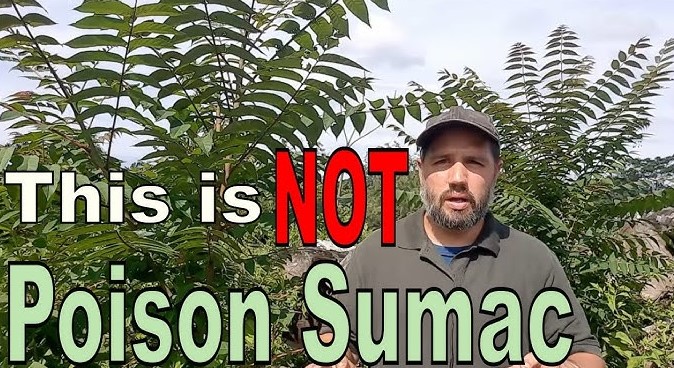BOURSESSENEGAL – Poison sumac is a plant that often goes unnoticed until it’s too late. It can cause severe skin reactions and discomfort for those who come into contact with it. Understanding poison sumac is essential for anyone who enjoys spending time outdoors. In this comprehensive guide, we’ll delve into what poison sumac is, how to identify it, its effects, and effective treatment options.
What is Poison Sumac?
Poison sumac, scientifically known as Toxicodendron vernix, belongs to the same family as poison ivy and poison oak. This plant typically thrives in wet, marshy areas, often found in the southeastern United States and parts of Canada. Recognizing poison sumac is crucial, as its toxic oils can lead to painful skin reactions.
Characteristics of Poison Sumac
To avoid the unpleasant consequences of coming into contact with poison sumac, familiarize yourself with its characteristics:
- Leaves: Poison has compound leaves with 7 to 13 leaflets that are glossy and green. The leaflets are pointed at the tip and smooth along the edges.
- Stems: The stems of poison are often red or yellow. Each leaf grows from a single stem.
- Berries: In the summer and fall, you may notice white or gray berries clustered together. These berries are not edible and can contribute to the plant’s toxicity.
- Height: Poison typically grows as a shrub or small tree, reaching heights of 3 to 10 feet.
Where to Find Poison Sumac
Poison sumac prefers wetland areas, often thriving in swamps, bogs, or along the edges of ponds and streams. When hiking or exploring natural settings, stay vigilant and avoid these environments if you’re unsure about the plants in the area.
Symptoms of Poison Sumac Exposure
If you accidentally come into contact with poison sumac, you’ll likely experience a range of symptoms. Understanding these symptoms can help you react promptly and seek treatment if necessary.
Initial Reaction
- Itching and Redness: The first signs of exposure often include itching and redness at the site of contact. This reaction can occur within a few hours.
- Blisters: As the reaction progresses, small blisters may form, filled with fluid. These blisters can break open, leading to further irritation.
- Swelling: In severe cases, the affected area may swell, causing discomfort and pain.
Severe Reactions
In some cases, individuals may experience more severe reactions, particularly if they have sensitive skin or a history of allergies. Symptoms can include:
- Extreme Swelling: Significant swelling may occur, impacting mobility if the exposure is on a limb.
- Fever: In rare cases, fever may accompany the rash, signaling a more systemic reaction.
- Difficulty Breathing: If you have a severe allergy to poison, you might experience breathing difficulties. This requires immediate medical attention.
Treatment Options for Poison Sumac Exposure
If you find yourself in the unfortunate situation of having come into contact with poison , don’t panic. Several effective treatment options can help alleviate symptoms and promote healing.
Immediate Steps to Take
- Wash the Area: Rinse the affected skin thoroughly with lukewarm, soapy water. This step can help remove the toxic oils from your skin.
- Avoid Scratching: As tempting as it may be, avoid scratching the rash. Scratching can lead to infection and worsen the situation.
- Cold Compresses: Apply a cold compress to the affected area to reduce itching and inflammation. This can provide immediate relief.
Over-the-Counter Treatments
- Topical Corticosteroids: Creams containing hydrocortisone can help reduce inflammation and itching.
- Antihistamines: Oral antihistamines like diphenhydramine (Benadryl) can help relieve itching and promote better sleep if the rash disrupts your rest.
- Calamine Lotion: Applying calamine lotion can soothe the skin and reduce discomfort.
When to Seek Medical Attention
While most cases of poison sumac can be treated at home, some situations warrant a visit to the doctor:
- If the rash covers a large area of your body.
- If you experience severe swelling or difficulty breathing.
- If you notice signs of infection, such as increased redness, warmth, or pus.
Prevention Strategies
Preventing poison sumac exposure is the best way to avoid its painful effects. Here are some strategies to help you stay safe:
Identify and Avoid
Educate yourself and others about what poison sumac looks like. Always be cautious when walking in areas known to contain poison .
Wear Protective Clothing
When hiking or working in potentially hazardous areas, wear long sleeves, pants, and gloves. This extra layer can help shield your skin from contact with the plant.
Clean Up After Outdoor Activities
If you’ve been in areas where poison may grow, wash your clothes and gear immediately after returning home. The toxic oils can linger on surfaces, increasing the risk of exposure.
Conclusion
Understanding poison sumac is essential for anyone who enjoys the great outdoors. By recognizing the plant’s characteristics, symptoms of exposure, and effective treatment options, you can protect yourself and minimize discomfort if contact occurs. Always prioritize prevention, and if you find yourself in need of treatment, act quickly to alleviate symptoms. With the right knowledge, you can confidently navigate nature while avoiding the unpleasant consequences of poison.
REFERENCE : https://www.health.com/



